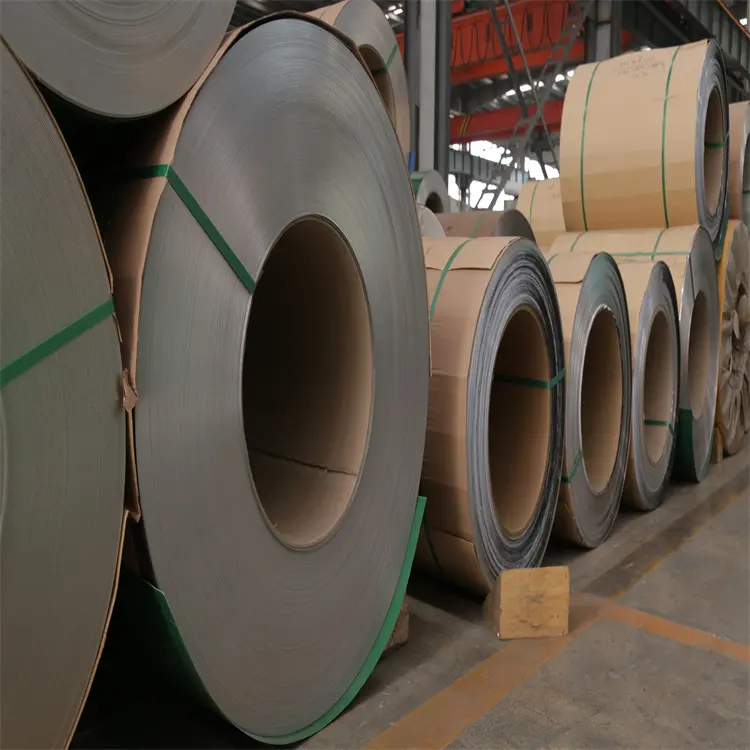Practical Considerations When Selecting Metal for Your Project
Choosing the right material for a build or fabrication project requires balancing performance, cost, appearance, and long-term maintenance. When durability, corrosion resistance, and aesthetics are priorities, a Stainless Steel Sheet often becomes the material of choice. But not all stainless steel is the same. Which grade will withstand your environment? What surface finish will meet your hygiene or visual requirements? How should you plan for fabrication, welding, and finishing? This guide walks through the critical factors you need to weigh when selecting a Stainless Steel Sheet for projects ranging from architectural panels and kitchen equipment to industrial enclosures and chemical processing components.
Understanding Stainless Steel Types and Grades
Austenitic Grades and Their Applications
Austenitic stainless steels—typified by grades like 304 and 316—are the most commonly used Stainless Steel Sheet materials. They offer excellent corrosion resistance, good formability, and stability across a wide temperature range. For interior architectural panels, foodservice equipment, and general-purpose fabrication, a 304 Stainless Steel Sheet will often be suitable. If your project is exposed to chlorides, sea air, or aggressive chemicals, consider upgrading to a 316 Stainless Steel Sheet for superior pitting resistance.
Selecting an austenitic Stainless Steel Sheet delivers non-magnetic properties in many cases and simplifies forming operations. These grades are also readily available in a wide variety of thicknesses and finishes, making them versatile for both prototype and production runs.
Ferritic and Martensitic Grades for Specific Needs
Ferritic stainless steels, such as the 400-series, offer better resistance to stress corrosion cracking and are generally less expensive than austenitic types. If your project includes components that do not require extensive welding or deep drawing, a ferritic Stainless Steel Sheet can provide a cost-effective, corrosion-resistant option.
Martensitic grades, which can be heat-treated to increase hardness and strength, are appropriate for applications where wear resistance or structural rigidity matters. For parts like brackets, blades, or other elements subject to mechanical stress, a martensitic Stainless Steel Sheet can be a strong candidate—though it is less corrosion resistant than austenitic types and typically magnetic.

Surface Finishes and Aesthetic Choices
Mill, No. 4 Brushed, and Mirror Finishes
The surface finish of a Stainless Steel Sheet affects both appearance and performance. Mill finish is the as-rolled surface; it is economical and often used where the sheet will be painted or otherwise coated. A No. 4 brushed finish offers a contemporary, satin appearance that hides minor scratches and is popular for elevators, handrails, and visible cladding. Mirror finishes give a highly reflective look that is striking for architectural elements but requires more maintenance to keep pristine.
When selecting a Stainless Steel Sheet for a visible application, consider how the finish will age and what maintenance it will require. A brushed No. 4 finish typically balances aesthetics and practicality, while a mirror finish demands frequent cleaning to preserve its visual impact.
Special Coatings and Treatments
Some projects benefit from additional surface treatments applied to a Stainless Steel Sheet. Passivation treatments remove free iron and enhance the natural corrosion resistance. Electro-polishing produces a smoother, easier-to-clean surface, highly desirable in medical or food processing environments where hygiene is critical. Anti-fingerprint coatings can be applied to Stainless Steel Sheet surfaces used in high-touch settings such as elevators or kitchen appliances.
Deciding on coatings and surface treatment early in the specification process ensures proper supplier selection and avoids costly rework later.
Mechanical Properties and Thickness Selection
Strength, Ductility, and Formability
Different Stainless Steel Sheet grades have varying tensile strength and ductility, which affects how they form and how they perform under load. Austenitic Stainless Steel Sheet grades are generally more ductile and easier to deep-draw or press than ferritic grades. When the design requires complex bends or stamped reliefs, specifying a ductile grade reduces cracking risk and keeps tooling costs down.
Understanding the mechanical properties helps determine the minimum thickness needed to prevent buckling, vibration, or deformation in service. For structural or load-bearing panels, choose a Stainless Steel Sheet thickness that satisfies both static loads and fatigue concerns.
Gauge, Thickness, and Cost Tradeoffs
Thickness selection often balances rigidity, weight, and cost. Thicker Stainless Steel Sheet improves stiffness and impact resistance but increases weight and material expense. Lighter gauge sheets are more economical and can be reinforced with stiffening ribs or backing structures if necessary. For exterior cladding or signage, a mid-range Stainless Steel Sheet thickness may provide the optimal balance between wind-load capacity and cost.
Make sure to consult relevant codes or structural calculations when choosing thickness for load-bearing applications to avoid underspecifying the Stainless Steel Sheet.
Corrosion Resistance and Environmental Considerations
Understanding Corrosion Mechanisms
Corrosion takes many forms—uniform corrosion, pitting, crevice corrosion, and stress corrosion cracking. The likelihood of each depends on environment, temperature, and the specific composition of the Stainless Steel Sheet. Chloride ions, acidic or alkaline conditions, and high humidity increase susceptibility to localized attacks like pitting. A 316 Stainless Steel Sheet with molybdenum content offers better protection in chloride-rich environments than a standard 304 grade.
Assessing exposure conditions—marine proximity, chemical contact, or industrial pollutants—will guide the grade selection and any necessary protective steps such as passivation or specialized finishes.
Long-Term Maintenance and Lifecycle Planning
How often will the Stainless Steel Sheet be inspected and cleaned? In public or coastal installations, frequent maintenance can extend life and avoid early degradation. Choosing a higher-grade Stainless Steel Sheet at the outset can reduce maintenance cycles and total life-cycle cost, particularly when access is difficult or maintenance is expensive.
Lifecycle planning should consider repairability and replacement logistics: is the Stainless Steel Sheet part modular for easy swap-out, or is downtime costly? These considerations influence initial specification and procurement strategy.
Fabrication, Welding and Joining Techniques
Cutting, Forming, and Edge Preparation
Fabrication starts with the right cutting and edge prep methods for Stainless Steel Sheet. Laser cutting, waterjet, or plasma cutting produce precise edges with differing heat-affected zones. For aesthetic parts, laser cutting yields clean edges suitable for minimal finishing. When forming Stainless Steel Sheet, attention to tooling and lubrication reduces galling and improves surface quality. Proper edge conditioning prevents cracks during bending or stamping.
Understanding how the Stainless Steel Sheet will be processed helps ensure the specified finish and geometry are achievable within budget.
Welding Techniques and Distortion Control
Welding Stainless Steel Sheet requires attention to heat input, filler material, and post-weld treatment. Austenitic Stainless Steel Sheet can be welded using TIG or MIG methods with compatible filler metals to preserve corrosion resistance. Heat control and fixturing reduce distortion in thin Stainless Steel Sheet panels. For critical or visible welds, plan for post-weld machining, blending, and polishing to match surrounding finishes.
Proper welding procedures and testing are essential to preserve the integrity of a Stainless Steel Sheet in structural or hygienic applications.
Thermal and Chemical Compatibility
High-Temperature Performance
If your project encounters elevated temperatures, consider the thermal properties of a Stainless Steel Sheet. Some grades maintain strength and corrosion resistance at high temperatures, while others are suited primarily for ambient conditions. For heat exchangers or exhaust components, select a grade that resists scaling and retains mechanical properties during thermal cycling.
Chemical Exposure and Chemical Resistance
A process environment that exposes a Stainless Steel Sheet to acids, bases, or solvents requires careful grade selection. Refer to corrosion-resistance charts and consult material specialists to determine whether a standard 304 Stainless Steel Sheet will suffice or whether a more specialized alloy is necessary. In chemical-processing contexts, selecting the correct Stainless Steel Sheet prevents unexpected failures and costly downtime.
Joining Stainless Steel Sheet to Other Materials
Fastening, Adhesives, and Isolation Techniques
When combining a Stainless Steel Sheet with dissimilar materials, galvanic corrosion is a concern. Use isolation layers, compatible fasteners, or coatings to prevent electrochemical reactions. Mechanical fastening is common, but for delicate finishes or thin gauges, structural adhesives or clinching methods preserve aesthetics. Proper selection of fasteners (stainless or coated) and attention to thermal expansion differences ensures long-term joint stability.
Sealing and Waterproofing Considerations
For exterior cladding or enclosure panels, seams and joints between Stainless Steel Sheet components must be sealed to prevent water ingress. Use appropriate gaskets, sealants, and design details that accommodate thermal movement to avoid stress concentrations and seal failures. Well-planned joint detailing extends the service life of the Stainless Steel Sheet assembly.
Sustainability and Recycling Aspects
Recyclability and Environmental Footprint
One of the advantages of Stainless Steel Sheet is its high recyclability. At end-of-life, many Stainless Steel Sheet products can be recovered and reprocessed into new stainless alloys. When sustainability is a priority, specifying recycled content and choosing grades with well-established recycling streams reduces environmental impact and supports corporate responsibility goals.
Life-Cycle Costing and Long-Term Value
Upfront cost is only part of the story. A higher-grade Stainless Steel Sheet may offer better corrosion resistance and reduced maintenance, lowering lifetime cost. Conduct life-cycle costing to compare options: factoring in maintenance, downtime, replacement risk, and recycling value yields a holistic perspective for procurement decisions.
Procurement, Standards, and Certification
Sourcing Reliable Suppliers and Certifications
When ordering Stainless Steel Sheet, verify supplier credentials, mill certifications, and material test reports. Standards such as ASTM, EN, or JIS specify compositions and mechanical properties for Stainless Steel Sheet and should be referenced in purchase orders. Request certificates of conformity and traceability for critical projects to ensure the material meets specified standards.
Lead Times, Tolerances, and Logistic Planning
Lead time for specific Stainless Steel Sheet sizes and finishes can affect project schedules. Discuss tolerances, minimum order quantities, and delivery arrangements with suppliers. Pre-qualifying a few approved Stainless Steel Sheet vendors reduces risk and allows for contingency planning if supply chains shift.
FAQ
What grade of stainless steel is best for outdoor use?
For outdoor installations, especially in marine or chloride-rich environments, a 316 Stainless Steel Sheet is commonly recommended due to its superior pitting and crevice corrosion resistance compared with 304. Duplex grades may also be considered for extremely aggressive conditions where higher strength and corrosion resistance are needed.
How do I choose the right thickness for a Stainless Steel Sheet application?
Choose thickness based on structural requirements, wind or impact loads, and desired stiffness. For decorative cladding, thinner Stainless Steel Sheet may suffice with properly designed supports; for load-bearing panels, use thicker gauges and validate with structural calculations.
Can stainless steel be painted, and does finishing affect corrosion resistance?
Yes, a Stainless Steel Sheet can be painted, but surface preparation is critical. Mill-finished or passivated surfaces should be properly cleaned and primed. Some surface treatments like electro-polishing enhance corrosion resistance and may affect adhesion; consult finish manufacturers for compatible systems.
How should I maintain Stainless Steel Sheet in coastal environments?
Regular washing to remove salt deposits, periodic inspection for pitting, and prompt cleaning of any surface contaminants are important. Specifying a higher-grade Stainless Steel Sheet and protective design details (drainage, ventilation) further extend service life.
Table of Contents
- Practical Considerations When Selecting Metal for Your Project
- Understanding Stainless Steel Types and Grades
- Surface Finishes and Aesthetic Choices
- Mechanical Properties and Thickness Selection
- Corrosion Resistance and Environmental Considerations
- Fabrication, Welding and Joining Techniques
- Thermal and Chemical Compatibility
- Joining Stainless Steel Sheet to Other Materials
- Sustainability and Recycling Aspects
- Procurement, Standards, and Certification
- FAQ


